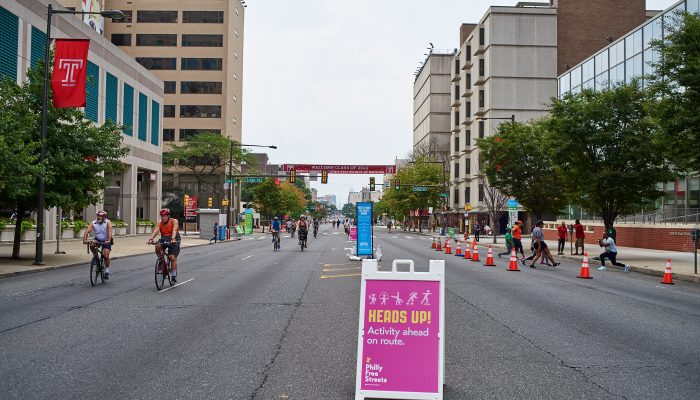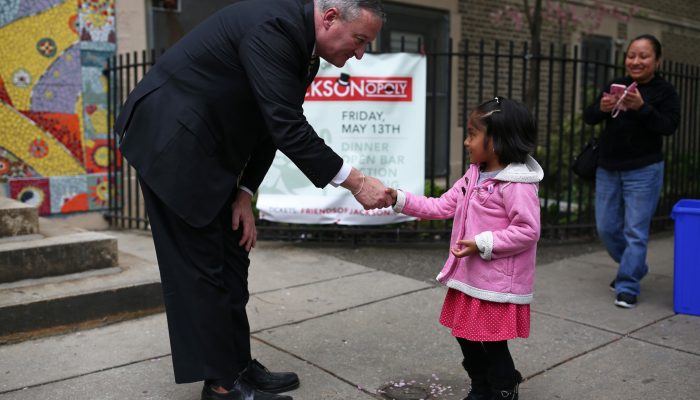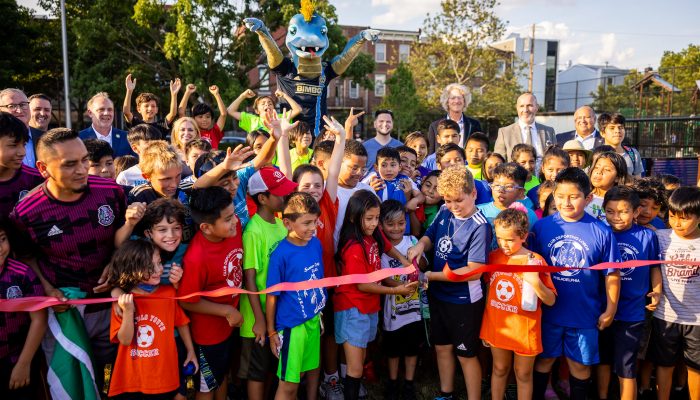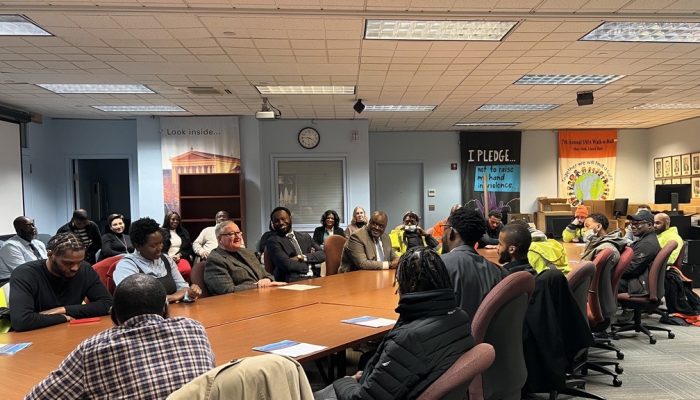This year’s Philly Free Streets program on North Broad Street continued to reach Philadelphians of all ages, backgrounds, and physical abilities from neighborhoods across the city, and beyond. Led by the Managing Director’s Office of Transportation & Infrastructure Systems (oTIS)—and made by possible by the support of presenting sponsor Temple University, John S. and James L. Knight Foundation, and AARP Pennsylvania—Philly Free Streets partnered with community groups and stakeholders along North Broad Street to bring an 8-mile roundtrip car-free route connecting City Hall and Butler Street, just north of Erie Avenue.
Initial data released by oTIS indicates that Philly Free Streets succeeded in encouraging thousands of residents to participate in active transportation and to discover the history, organizations, institutions, and businesses of North Broad Street.
From an analysis of 520 participant surveys conducted by Philly Free Streets volunteers demonstrates the success of Philly Free Streets on North Broad Street:
- Seventy-two percent (72%) of people surveyed reported that the August 2018 program was their first time at Philly Free Streets.
- Philly Free Streets on North Broad Street was enjoyed by people of all ages. Nine percent (9%) of people surveyed identified their age as 18-24; twenty-four percent (24%) identified their age as 25-34; twenty-two percent (22%) identified their age as 35-44; sixteen percent (16%) identified their age as 45-54; seventeen percent (17%) identified their age as 55-64; and twelve (12%) identified their age as 65 and over.
- One respondent penciled in that she is 84 years old!
- Compared to Philly Free Streets’ first program in 2016, the percent of respondents who identified as being over the age of 55 increased by eight percent (8%).
- Philly Free Streets on North Broad Street was diverse, with fifty-nine (59%) of people surveyed identified as minority, including forty-two (42%) as Black or African American.
- Compared to Philly Free Streets’ first program in 2016, the percent of respondents who identified as being minority increased by thirty-two (32%) and who identified as Black or African American by twenty-five percent (25%).
- 45 out of 48 Philadelphia zip codes were reported as home zip codes of people surveyed.
- While the program welcomed people from across Philadelphia, Philly Free Streets was well-attended by North Broad Street neighbors. The zip codes in which the highest number of people reported living were in North Philadelphia: 19140; 19130; 19132.
- One person surveyed was visiting Philadelphia from as far as California and, even farther, from Japan!
In addition to the surveys, other data sources amplified the program’s success.
- In partnership with SERVE, the City of Philadelphia’s Office of Civic Engagement & Volunteer Service, Philly Free Streets welcomed 79 volunteers who, together, volunteered 93 shifts—that’s 372 total service hours!
- Indego, the City of Philadelphia-owned bike share system, welcomed riders to explore car-free North Broad Street on two wheels. On Saturday, August 11, the most-used stations in the entire Indego system were the five stations located along the Philly Free Streets route. Of them, Indego’s Broad and Oxford bike share station at Progress Plaza welcomed over five times as many trips as usual for a summer Saturday.




